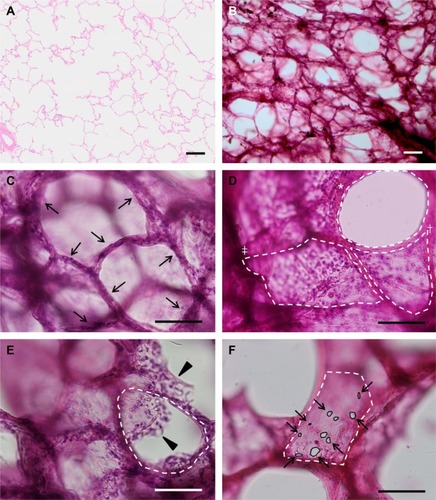Figures & data
Figure 1 Images (H&E) of the lung showing 4 μm thick (A) and 300 μm thick (B–F) sections at ×40 magnification (A and B) and ×100 magnification (C–F).
Abbreviations: FU, framework unit; H&E, hematoxylin and eosin.

Table 1 Characteristics of the cases
Table 2 Comparison of FUs and pores of Kohn between groups with and without emphysema
Table 3 Bivariable and multivariable regression analysis on DLCO
Table 4 Bivariable and multivariable regression analysis on DLCO/VA
Table 5 Bivariable and multivariable regression analysis on RV
Figure 2 Schemas (A–D) and images of an ordinary H&E slide (A′–D′) and an H&E thick section (A″–D″) on possible progression of pulmonary emphysema.
Abbreviation: H&E, hematoxylin and eosin.

